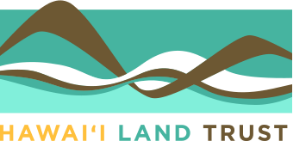Save the Wetlands Hui
Over the past several decades, residents of coastal communities have become increasingly aware of the important role that wetlands play in capturing sediment, mitigating floods, and providing critical habitat for threatened and endangered species. Several years ago, a community-led effort in Kula Kai (the coastal area of south east Maui, often referred to as Kihei) was begun by the Save the Wetlands Hui. In early 2020 Hawaiʻi Land Trust staff began assisting Save the Wetlands Hui in their restoration efforts. As described by Robin Knox, this partnership serves both the people and threatened habitats of this coastal community in south Maui.
Save the Wetlands Hui (the Hui) was formed in 2019 by residents who were concerned about disappearance of South Maui’s last remaining wetlands. Wetlands are crucial ecosystems that provide habitat for a diverse range of plant and animal species, store flood waters, protect ocean water quality, support cultural and recreational activities, and significantly enhance resilience against coastal flooding and the effects of climate change, sequestering carbon up to 55 times faster than tropical rainforests.
Despite their importance, wetlands are increasingly threatened by development and pollution. Since 1970, about 35% of the world’s wetlands have been lost — disappearing about three times faster than forests. In Kula Kai (the makai part of Kula Moku) on the leeward coast of Maui, over 50% of the wetlands were lost to development between 1965 and 2003, and losses have continued to date. The Hui believes that protection and restoration of the remaining wetlands can provide climate resilience benefits including nature-based solutions for the increasingly severe flooding that has been occurring in North Kihei. Hawaiʻi Land Trust supported the efforts of the Hui by providing restoration guidance, space for a native plant nursery, and serving as fiscal sponsor of County of Maui grants from 2020 to 2023. With this support, the Hui embarked upon a mission to save the wetlands and build climate resilience on the pillars of culture, science, and community.
Aloha ʻāina is the principle that guides the Hui and reaffirms the importance of nohona Hawaiʻi: our relationship with the place we call home. Cultural Advisor, Trinette Furtado, reminds us of our kuleana to honor, listen to and follow the manaʻo and ʻike of Akua, our ʻaumakua, and our kūpuna. Our restoration site was named for Lāʻielohelohe, a chiefess, the wife of Piʻilani and mother of Kihawahine, moʻo guardian of Maui. Through Kilo Mahina events, the Hui learned to kilo (observe, examine, forecast). Science, kilo, moʻolelo, and ʻike are blended in a holistic way to observe and kōkua.
The Hui’s science work was led by Project Manager and Environmental Scientist, Robin Knox. Geospatial analysis of data identified 44 landscape features that included streams, wetlands, and fishponds. An inventory of the South Maui wetland TMK parcels and ownership was created to facilitate conservation and restoration efforts. Dr. Scott Fisher of HILT conducted a paleo environmental investigation of the sediment record at Lā’ie Mauka Wetland that revealed between 8 and 12 significant storms or tsunamis which left a substantive signature on the landscape over 4300 years. At least 4 are tsunamis, and there is a notable increasing frequency of evidence interpreted as storm events.
Through soil studies a significant layer of recent sediment deposits coming from the upper watersheds was observed that impairs the functions of the wetland to mitigate floods, protect ocean water quality, and provide waterbird habitat. The Hui’s vision includes restoration of these wetland functions.
The Hui’s observations identified a dynamic hydrologic regime that ranges seasonally from drought to flooding, with surface and groundwater levels influenced by precipitation in the upper watershed, tidal cycles, and sea level. Water quality data identified estuaries, freshwater springs, and hypersaline groundwater in areas with salt deposits at the surface. At the beginning of restoration work at Lāʻie Mauka, native species composition was less than 5% and species diversity was low with only 3 native species present. Dozens of restoration workdays have resulted in 100% increase in native species diversity and transformation of the active restoration area from almost 100% invasive plants to 95% native plant cover.
The Hui teamed with the non-profit, Learning Endeavors, to provide a professional development wetlands workshop for 14 elementary and secondary educators, and conducted wetland field trips for more than 500 students.
Calendars and student activity books were developed that teach about wetlands in ʻōlelo Hawai’i. Through social media and a website with interactive maps and videos, the Hui’s education and outreach efforts have elevated the community’s understanding of the value of wetlands. (Visit https://savethewetlands.org/). Education and outreach to decisionmakers about the location, status, value and functions of wetlands culminated in passage of a precedent-setting Wetland Restoration and Conservation Ordinance which will establish a zoning overlay map protecting all Maui County Wetlands from development. Going forward, the Hui will continue our kilo, science, and educational efforts, working with our partners, the community, and decision makers to further refine our understanding of and care for the wetlands of Maui County.
- Robin Knox, Save the Wetlands Hui
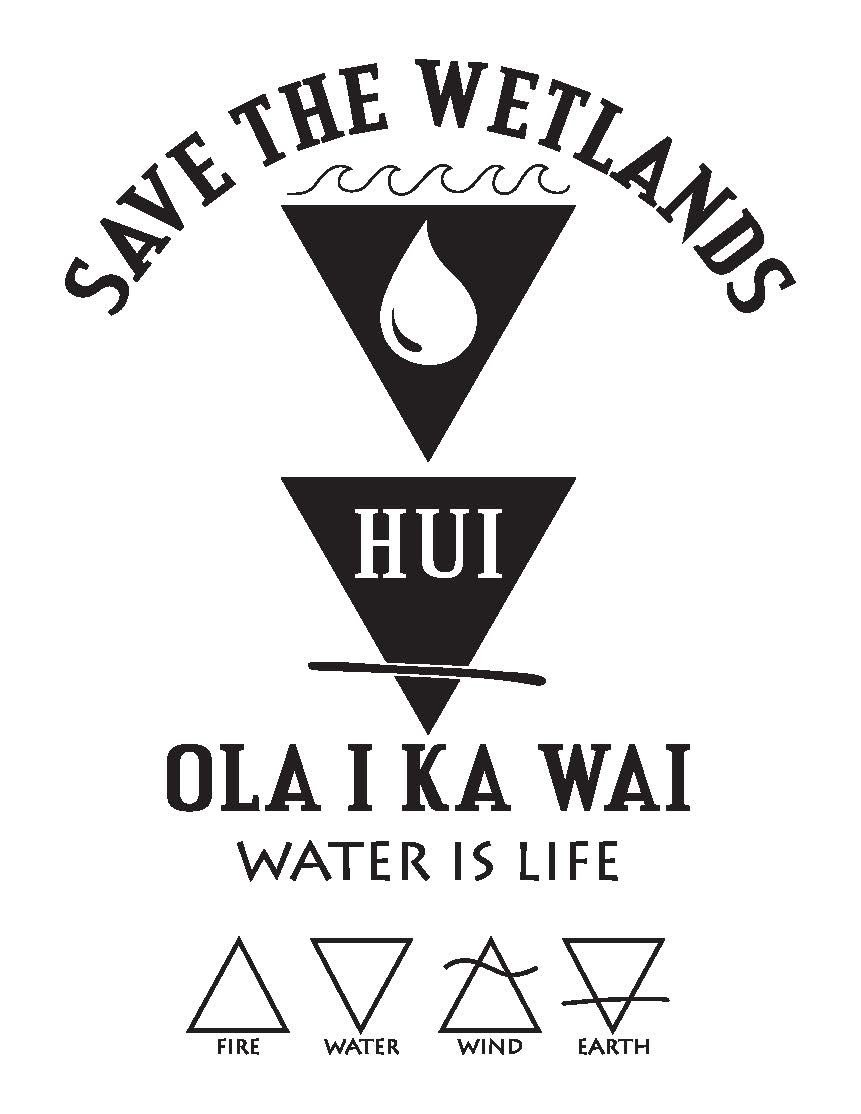

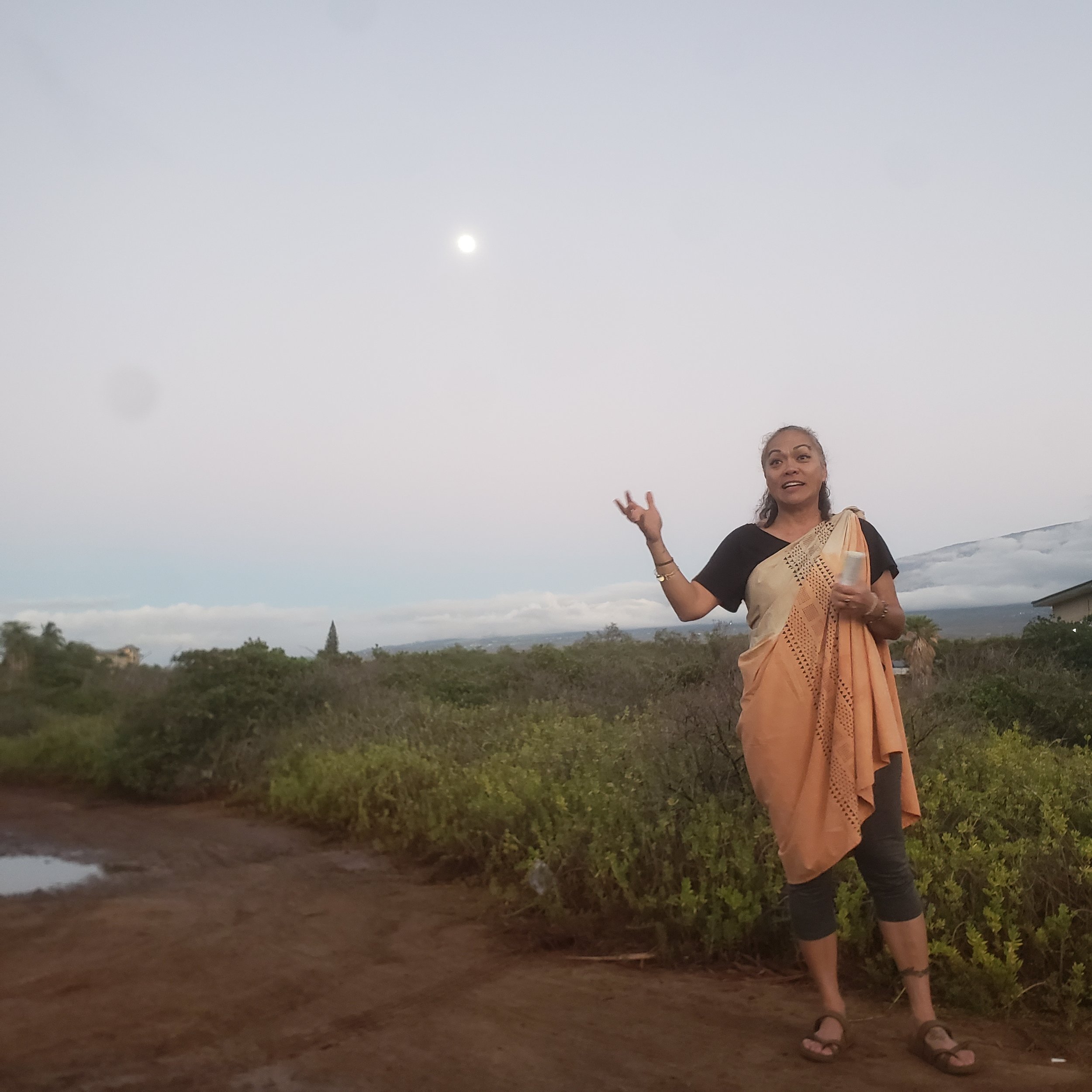

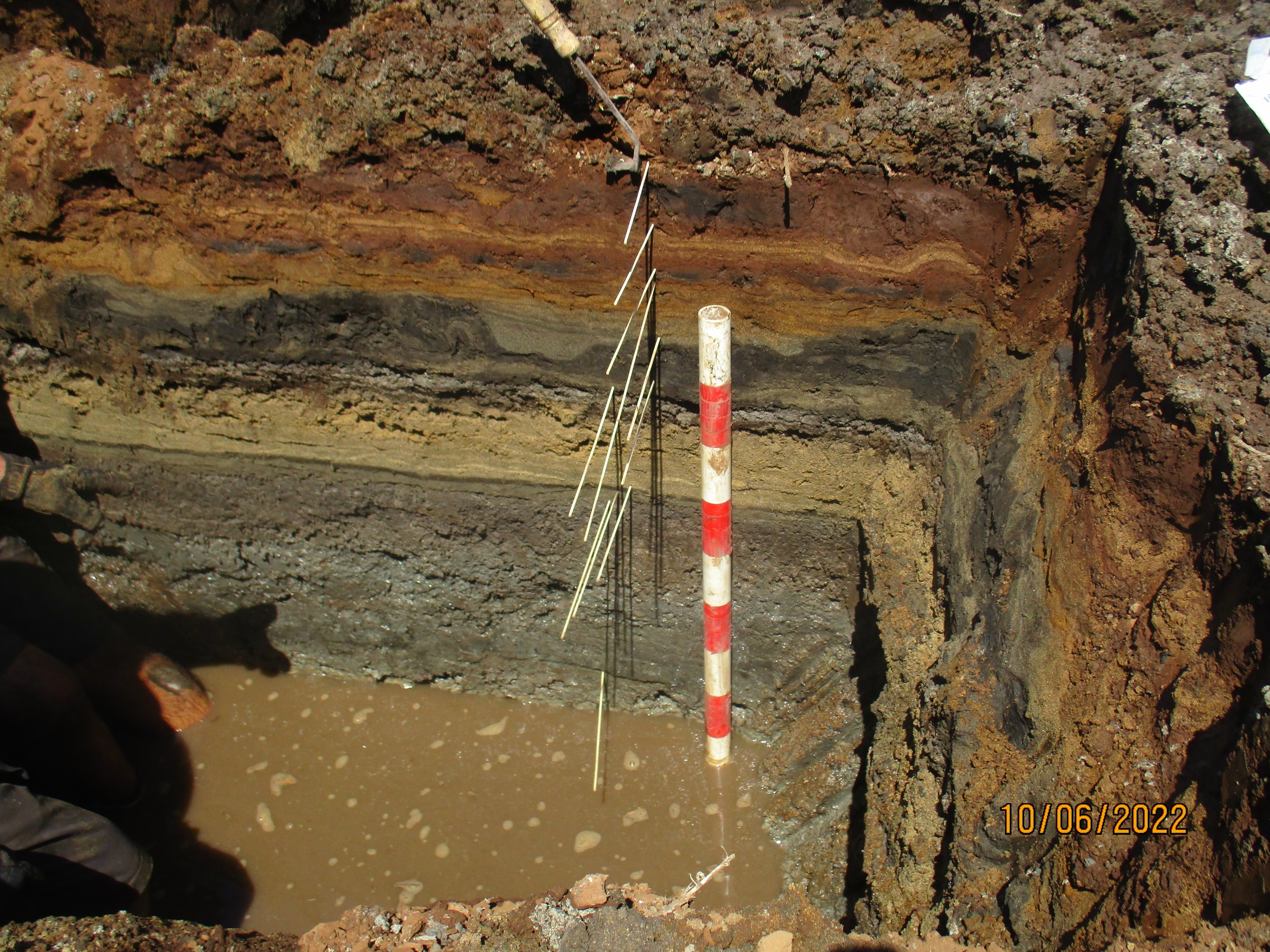
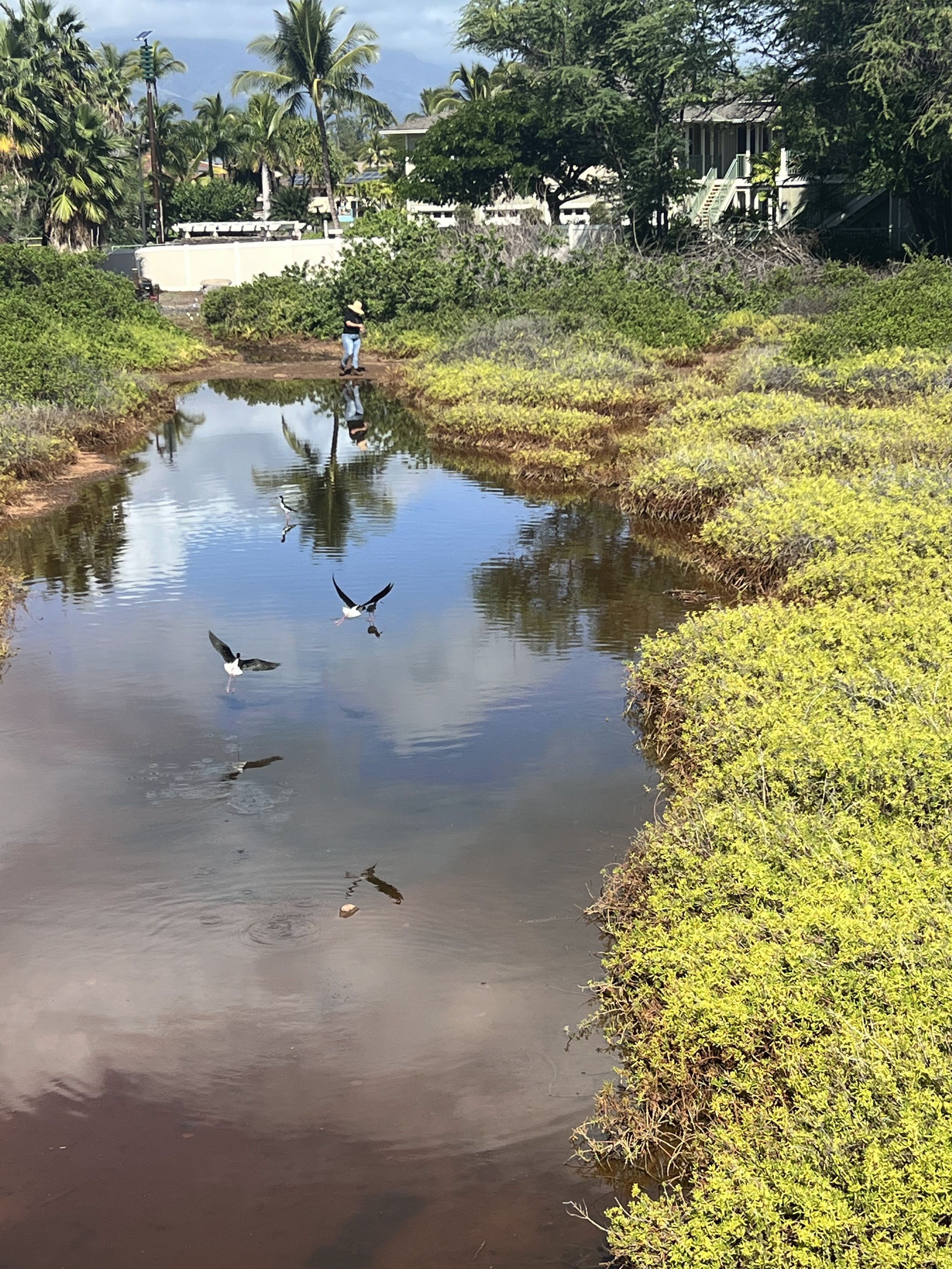
Photo Descriptions:
1) Save the Wetlands Hui logo
2) Cultural Advisor, Trinette Furtado at sunset
3) Cultural Advisor, Trinette Furtado with the moon
4) A student taking notes during a field trip
5) One of the trenches at Lāʻie Wetland showing the sedimentary layers
6) Ae'o (Hawaiian Stilt, Himantopus mexicanus knudseni) at La'ie Wetland
